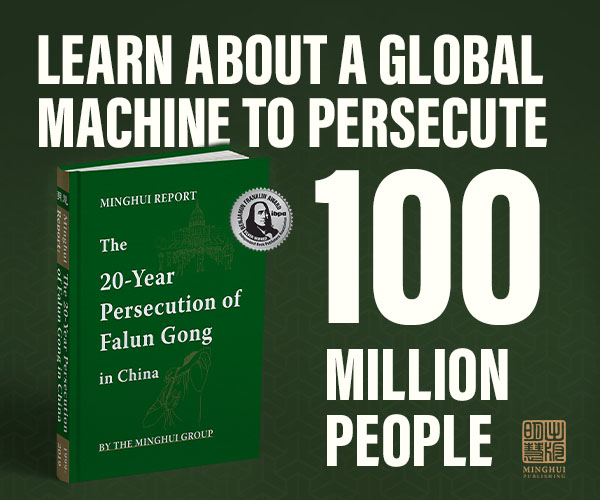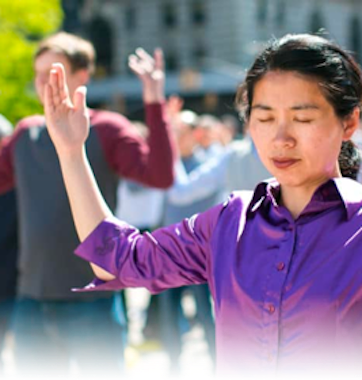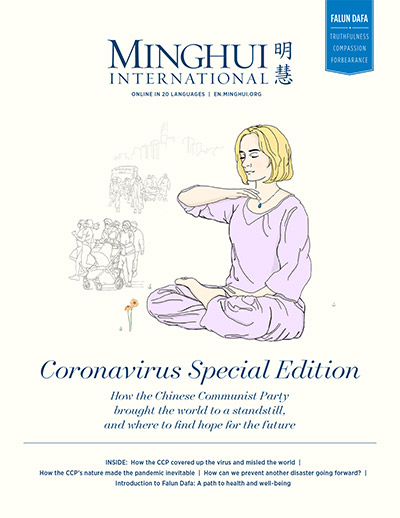(Minghui.org) Throughout history, every righteous belief system, both inside and outside of China, had been persecuted. The persecutions often tested the followers’ faith in the belief systems. Regardless of the legitimacy of the persecutions, none were able to destroy the righteous belief systems or prevent true believers from reaching consummation. The tribulations instead showcased followers’ strong determination amid the darkness, inspiring more people to join the journey of pursuing the truth and finding their spiritual home.
Here are a few examples.
Suppression of Buddhism
Buddhism was persecuted several times throughout the Chinese history. The first started with Tuoba Tao, Emperor Taiwu of Northern Wei. In 438, he ordered all monks under 50 to return to secular life. Following a recommendation from Cui Hao, a senior official, the emperor killed monks, destroyed Buddha statues, and demolished temples in 446.
Both of them faced consequences afterwards. The emperor was killed by eunuchs, and so were his two sons. Two years before the emperor’s death, he imposed on Cui multiple penalties, including canings, imprisonment, exile, and execution.
History repeated itself 130 years later. Yuwen Yong, Emperor Wu of Northern Zhou issued an order in 574 to ban both Buddhism and Taoism. With scriptures and statues ruined, he forced monks and Taoists to return to secular life. The emperor died the following year at age 36 due to an infectious disease, with festering all over his body.
Li Yan, Emperor Wuzong of Tang, launched the third wave of persecution in 574. He only allowed four temples in Chang’an, two temples in Luoyang, and one temple in each of the 34 provinces. No temples were allowed elsewhere. As a result, over 4,600 large temples were destroyed and more than 40,000 smaller temples were demolished. In addition, scriptures were burned, Buddha statues were melted to produce money, and over 260,000 monks were converted to lay people. This emperor met his fate too. Due to a strange disease, his head swelled like that of a cow. With ulcers all over, his eyes bugged out, and mouth bleeding, he was in extreme pain, screaming day and night. In the end, he died at age 32.
Chai Rong, Emperor Shizhong of Later Zhou, also restricted Buddhism. Only one temple could be kept in each county and all the rest were removed. Only those who could recite required Buddha scriptures and met other conditions were allowed to be monks; otherwise, they would be punished. Over 30,000 temples were demolished, and Buddha statues were ruined. Nearly one millions monks and nuns were turned into secular people. One Bodhisattva statue in Zhenzhou City, Henan Province was well respected. Those who were sent to damage the statue ended up with broken arms and died. Chai went there in person to demolish the statue by hitting the statue’s chest with a big axe.
Four years later, Chai was suddenly sick with ulcers in the chest. Not long after that, the ulcers deteriorated and he died miserably at age 39.
In these four waves of persecution described above, the longest one was less than six years and the shortest was only eight months. Each time after the persecution, the successors always revived Buddhism, bringing back the tradition and continuing the civilization.
Persecution in the Roman Empire
In the first three hundred years after Christianity was introduced, it was also brutally suppressed. Nero, the fifth Roman Emperor, set up a week-long fire in AD 64, which destroyed two-thirds of Rome. Blaming Christians for the arson, he started the empire’s first wave of persecution.
“First, then, the confessed members of the sect were arrested; next, on their disclosures, vast numbers were convicted, not so much on the count of arson as for hatred of the human race,” wrote historian Tacitus in the Annals, “And derision accompanied their end: they were covered with wild beasts' skins and torn to death by dogs; or they were fastened on crosses, and, when daylight failed were burned to serve as lamps by night.”
“Nero had offered his Gardens for the spectacle, and gave an exhibition in his Circus, mixing with the crowd in the habit of a charioteer, or mounted on his car,” Tacitus continued.
Christians were also persecuted in the reign of Marcus Aurelius, who was the Roman emperor between 161 and 180, and a Stoic philosopher. “The cruelties used in this persecution were such that many of the spectators shuddered with horror at the sight, and were astonished at the intrepidity of the sufferers,” wrote John Foxe in Book of Martyrs, “Some of the martyrs were obliged to pass, with their already wounded feet, over thorns, nails, sharp shells, etc. upon their points, others were scourged until their sinews and veins lay bare, and after suffering the most excruciating tortures that could be devised, they were destroyed by the most terrible deaths.” Germanicus, for example, was delivered to the wild beasts because of his faith in Christianity.
The Diocletianic persecution that started in 303 was the last and most severe persecution of Christians in the Roman Empire. A series of edicts were issued to rescind Christians’ legal rights and order them to comply with other religious practices.
In Book of Martyrs, Foxe recorded ten persecutions during the Roman Empire. Instead of being purged out, however, the practice attracted more and more people. The number of Christians was about 7,500 in AD 100, which grew to about 200,000 by the end of the second century, with 7,000 Christians in Rome alone. The number further increased to about one million by AD 250, and over six million by AD 300, with more than 1,800 churches.
In 313, Constantine the Great and his co-emperor Licinius issued the Edict of Milan. This gave Christianity legal status and stopped the persecution.
The Freedom of Belief
Over 1,000 years have passed since the last wave of the suppression of Buddhism and Christianity mentioned above. Although brutal at the time, the persecution episodes were like ripples in the long river of history. Nonetheless, they did provide lessons for our modern society, and set up examples for how people remained determined in righteous faiths when facing challenges.
The Declaration of Independence passed by the U.S. Congress in 1776 says, “We hold these truths to be self-evident, that all men are created equal, that they are endowed by their Creator with certain unalienable Rights, that among these are Life, Liberty and the pursuit of Happiness.” This shows how freedom of belief is the foundation of our modern world.
But things changed dramatically after communism emerged. “Religion is the opium of the people. It is the sigh of the oppressed creature, the heart of a heartless world, and the soul of our soulless conditions,” wrote Karl Marx. Vladimir Lenin believed the same. “Religion is the opium of the masses,” he said.
After causing terror, blood, and famine, communism was introduced to China, where the machine of brutality, killing, and lies was scaled up and operated in a more sophisticated manner.
The Chinese Constitution specifies “Citizens of the People’s Republic of China enjoy freedom of speech, of the press, of assembly, of association, of procession and of demonstration.” (Article 35) and “Citizens of the People’s Republic of China enjoy freedom of religious belief.” (Article 36) In reality, however, people’s rights are not protected. The Chinese Communist Party suppressed landlords and capitalists in the 1950s, and wiped out traditions in Cultural Revolution in the 1960s. Similarly, the Constitution did not protect students and democracy advocates in 1989’s Tiananmen Square Massacre, or Falun Gong practitioners when they started facing persecution in 1999.
(To be continued)
Views expressed in this article represent the author's own opinions or understandings. All content published on this website are copyrighted by Minghui.org. Minghui will produce compilations of its online content regularly and on special occasions.
Category: Perspective










